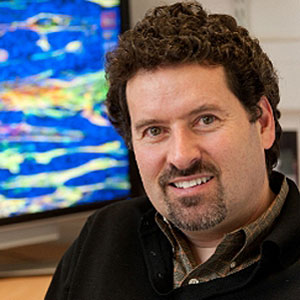Child brain tumour research projects
Although they’re relatively rare, brain tumours are the biggest cancer killer of children and teenagers and the biggest cause of potentially treatable blindness in children – 62% of children who survive a brain tumour will be left with a life-altering, long-term disability.
Research is essential if we are to enhance our understanding of why and how each tumour forms, and what can be done to treat them.
This is why we fund research into a wide variety of childhood brain tumour types.
Current high grade brain tumour research projects
Here are the research projects we are currently funding that relate to understanding or treating high grade brain tumours in children

Dr. Jessica Taylor
Identifying a specific subtype of brain tumour without surgery
Dr Jessica Taylor at the University of Cambridge is developing a novel strategy called ADCIPs to identify and treat WNT-medulloblastoma, a highly curable brain tumour in children, without the need for surgery.

Dr Sophie Thomas
Rebuilding a meaningful life for young people
Acceptance and Commitment Therapy (ACT) is a psychological intervention with a broad focus. Dr Sophie Thomas aims to assess the feasibility and acceptability of ACT to help young people, aged 11-24 years, who have survived a childhood brain tumour.
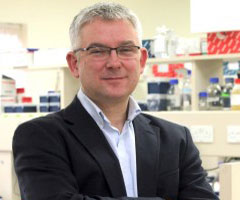
Professor Steve Clifford
INSTINCT:on a mission to beat childhood brain tumours
Our INSTINCT programme brings together experts from Newcastle University, the Institute of Cancer Research (ICR) and the UCL Institute for Child Health in London to research
high-risk childhood brain tumours, including DIPG.
The research programme on DIPG is being led by Dr Chris Jones at the Institute of Cancer Research. Dr Jones has extensive experience in understanding the genetic basis of these tumours and what is driving tumour growth and then developing new drugs that target the genes involved.

Professor Colin Watts
Tessa Jowell BRAIN MATRIX
The Tessa Jowell BRAIN-MATRIX is a first-of-its-kind study that will enable doctors to treat brain tumours with drugs that are more targeted than ever before. We are excited to be investing £2.8 million to set the study up, and to drive it into the future.
Although the trial is being led from the UK, we expect it to deliver global impact for brain cancer patients.

Dr Paul Northcott
Medulloblastoma Epigenome Regulation in Treatment (MERIT)
Previous research has shown that epigenetic changes contribute to treatment resistance in medulloblastomas. Epigenetic changes refer to changes in the structure of DNA that alter the way DNA is ‘read’ by the cell. The aim of this research programme, led by Dr Paul Northcott, is to identify the epigenetic changes occurring in Group 3 medulloblastomas in response to treatment.

Dr Rameen Beroukhim
Investigating transcription factors in development
Dr Beroukhim’s team are doing an in-depth analysis of two transcription factors, one that they suspect drives low grade brain tumours and the other that may drive high grade brain tumours.
Ultimately they’ll be looking for ways to use drugs to return transcription to normal levels, and stop tumour growth.

Professor Louis Chesler
New drug development for medulloblastoma
Professor Chesler is working with a team from Germany and the USA to study Group 3 medulloblastoma. The team will be analysing the genome in medulloblastoma tumour cells while also working on new ways to test drugs for this tumour type.
If successful, the research could, for the first time, reveal how these tumours are wired. This could mean that new drugs to treat this tumour type are delivered to the clinic within five years.
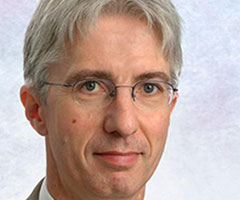
Professor Colin Kennedy
Quality of survival in a Europe-wide clinical trial
This funding supports the quality of survival aspects of the European clinical trial entitled SIOP-PNET5-MB. This trial is for children with medulloblastoma tumours that have been defined in the clinic as “standard risk”. The purpose of the trial is to assess whether treatment can be reduced so that these children experience less long term side effects, but still benefit from the anti-tumour activity of the protocol.
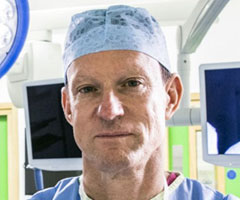
Mr Conor Mallucci
Solving the mystery behind Cerebellar Mutism Syndrome
Mr Mallucci will be carrying out a multi-centre study to investigate Cerebellar Mutism Syndrome (CMS), a.k.a. Posterior Fossa Syndrome, a serious and poorly understood late effect resulting from surgical complication. It is seen in up to 25% of children after removing tumours from the very back of the skull, known as the cerebellum.
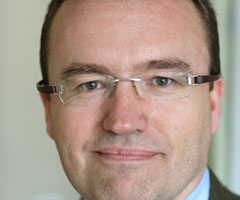
Dr Darren Hargrave
Tumour-targeted drugs for kids with diffuse midline glioma (aka DIPG)
We’re funding the UK participation of BIOMEDE, an international, adaptive clinical trial for children with Diffuse Midline Gliomas – pontine location (DMG, formerly known as DIPG).
The trial is the first of its kind because it requires the children to have a biopsy of the tumour, and based on the molecular traits of the tumour different treatments are assigned.
The adaptive nature of this trial means that as new treatments become available for this kind of tumour, they can be added into the trial. This is key so that children get access to the new, potentially life-saving treatments faster.
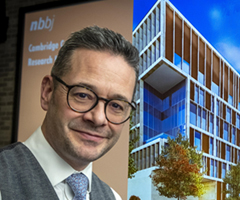
Professor Richard Gilbertson
No brain tumour ignored
This grant is for a large programme of work into two different rare childhood brain tumours. Professor Gilbertson will focus on three main areas of work: making better models to use in the lab, discovering and testing new drugs, and trialling the best way to deliver new drugs to tumours.

Dr Paul Northcott
Understanding the significance of medulloblastoma subtypes
The 2016 revision of brain tumour classifications from the World Health Organisation (WHO) included the four consensus subgroups for medulloblastoma (WNT-activated, SHH-activated, Group 3 and Group 4).
To date, medulloblastomas in Groups 3 and 4 have been notoriously difficult to treat because they have many different and unpredictable responses to treatment.
Dr Northcott’s team will use sophisticated statistical analysis, on over 1,200 samples, to determine if there are further subtypes within these subgroups.

Professor Michael Hawkins
Improving Survival for Survivors
This research project, led by Professor Hawkins, aims to establish one system that would allow us to monitor the health outcomes of brain tumour survivors under the age of 40. This system would help us track the risks associated with surviving a brain tumour and then help us to identify groups of survivors that have increased risk of poor health outcomes.

Dr Jan Schuemann
Extreme dose rate proton therapy
Previous studies have shown that delivering radiotherapy extremely rapidly can dramatically reduce side-effects. Radiation therapy that delivers the same dose of radiation in a much shorter period of time is called extreme dose radiation (EDR). EDR therapy has not been tested using proton beams, and that’s where this innovative research project comes in.
The research team, led by Dr Schuemann, will use pre-clinical models to test EDR proton therapy with the aim of establishing a treatment regimen that’s effective and well-tolerated by people. They’ll compare EDR to conventional radiation delivery and look for any differences in side-effects, specifically looking into the effects on cognition and motor control.

Professor Louis Chesler
Targeting SRC in childhood gliomas
One of our ongoing grants identified a protein called SRC that may be driving group 4 medulloblastomas in children. This type of tumour has been notoriously difficult to study and to treat. This new research will delve into the role of SRC in starting and motivating tumour growth, and the team will be using sophisticated lab models to test a new drug to target it.
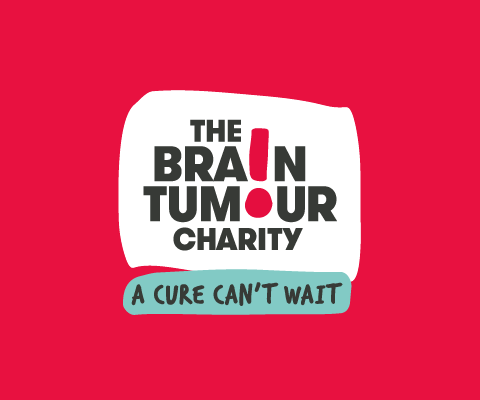
HR-MB Clinical trial for children with high-risk medulloblastoma
Professor Simon Bailey is conducting an international clinical trial to evaluate the advantages of different chemotherapy and radiotherapy strategies for high-risk medulloblastoma patients.
Current low grade brain tumour research projects
Here are the research projects we are currently funding that relate to understanding or treating low grade brain tumours in children

Dr David Jones
The Everest Centre
The Everest Centre is being financed by The Brain Tumour Charity with money raised by the family and friends of Toby Ritchie, who was diagnosed with a low grade brain tumour at the age of five.
The centre will fund several, vital research projects that will help us understand more about low grade paediatric brain tumours and trial new treatments.

Professor Colin Watts
Tessa Jowell BRAIN MATRIX
The Tessa Jowell BRAIN-MATRIX is a first-of-its-kind study that will enable doctors to treat brain tumours with drugs that are more targeted than ever before. We are excited to be investing £2.8 million to set the study up, and to drive it into the future.
Although the trial is being led from the UK, we expect it to deliver global impact for brain cancer patients.

Dr Rameen Beroukhim
Investigating transcription factors in development
Dr Beroukhim’s team are doing an in-depth analysis of two transcription factors, one that they suspect drives low grade brain tumours and the other that may drive high grade brain tumours.
Ultimately they’ll be looking for ways to use drugs to return transcription to normal levels, and stop tumour growth.

Dr Sophie Thomas
ACT NOW (Acceptance and Commitment Therapy for Neuro-Oncology Wellness
Acceptance and Commitment Therapy (ACT) is a psychological intervention with a broad focus. Dr Sophie Thomas aims to assess the feasibility and acceptability of ACT to help young people, aged 11-24 years, who have survived a childhood brain tumour.

Dr Todd Hankinson
Identifying directed therapies for Adamantinomatous Craniopharyngioma (ACP)
Almost all children with ACP suffer from a life-altering side effect or injury from either the tumour itself or treatment. Side effects and injuries include hormone imbalances, blindness, and morbid obesity. The current standard of treatment includes surgical removal of the tumour followed by radiation therapy – there are currently no targeted therapies to treat ACP.
The aim of the research programme, led by Dr Todd Hankinson, is to understand the behaviour of the different types of cells and identify targets for treatment.

Professor Michael Hawkins
Combining data for better monitoring
This research project, led by Professor Hawkins, aims to establish one system that would allow us to monitor the health outcomes of brain tumour survivors under the age of 40. This system would help us track the risks associated with surviving a brain tumour and then help us to identify groups of survivors that have increased risk of poor health outcomes.

Dr Jan Schuemann
Extreme dose rate proton therapy
Previous studies have shown that delivering radiotherapy extremely rapidly can dramatically reduce side-effects. Radiation therapy that delivers the same dose of radiation in a much shorter period of time is called extreme dose radiation (EDR). EDR therapy has not been tested using proton beams, and that’s where this innovative research project comes in.
The research team, led by Dr Schuemann, will use pre-clinical models to test EDR proton therapy with the aim of establishing a treatment regimen that’s effective and well-tolerated by people. They’ll compare EDR to conventional radiation delivery and look for any differences in side-effects, specifically looking into the effects on cognition and motor control.
Past paediatric research projects
- PNET5 clinical trial: transforming treatments for childhood brain tumours (molecular testing)
- Saving lives with a new scanning technique
- Understanding the origins of medulloblastoma
- The VINILO clinical trial
- Preventing resistance to targeted therapies
- Investigating tumour initiating events
- Finding new methods to treat diffuse midline glioma (formerly DIPG)
- Making models of paediatric low grade glioma
- Targeting ALK2 in diffuse midline glioma (formerly DIPG)
- The PROMOTE study: Patient Reported Outcome Measures Online To Enhance Communication and Quality of Life after childhood brain tumour
- ‘Shining Light’ on DNA mutations in childhood brain tumours to reveal new therapy targets
- Tumour-targeting drugs that spare healthy brain cells: the quest for a breakthrough
- Pilocytic astrocytoma – are fusion genes the key to a cure?
- Testing a new drug combination for young people with low grade brain tumours
- Saving lives with a new scanning technique
- Impact of the HeadSmart Early Diagnosis Campaign
- Medulloblastoma – new models may be key to new treatments
- DAXX – a new target for brain tumour drugs
In this section
Recommended reading
Get your free Brainy Bag
Our Brainy Bag is a free gift for children and young people who have been diagnosed with a brain tumour, made up of a range of handpicked toys and activities!






